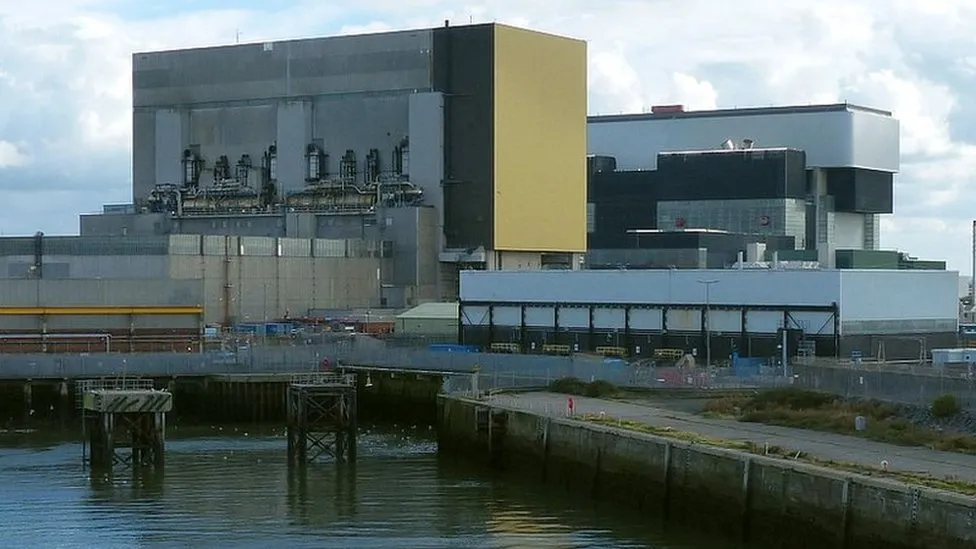France' s EDF has said it will review whether there is a case to keep open the Hartlepool and Heysham 1 NPPs in the UK beyond their current expected closure date in 2024.
s EDF has said it will review whether there is a case to keep open the Hartlepool and Heysham 1 NPPs in the UK beyond their current expected closure date in 2024.
EDF said it would invest GBP1 billion ($1.1 billion) over 2023-25 to help UK plants to maintain output. “Our priority in the next few years is to deliver as much output as we safely can from the existing fleet, to support security of supply and help preserve the UK’s nuclear skills,” said Matt Sykes, Managing Director of EDF’s Generation business.
Currently UK operating NPPs include four stations with ageing advanced gas-cooled reactors (AGRs) at Heysham 1, Hartlepool, Torness and Heysham 2 as well as Sizewell B, which has a pressurised water reactor. Together these have a generating capacity of 5.5GWe. Heysham 1 and Hartlepool are due to close in 2024 and Torness and Heysham 2 by 2030. Three other stations with AGRs – Hunterston B, Hinkley Point B and Dungeness B have already closed and are being defuelled. Sizewell B is due to close in 2035. A new plant with EPR reactors is under construction at Hinkley Point C in Somerset.
An EDF spokeswoman said: “In light of the severity of the energy crisis and the results of recent graphite inspections, EDF will look to review the case for a short extension for Heysham 1 and Hartlepool Power Stations to generate beyond the current forecast of March 2024.”
This came as part of a strategy update for EDF’s UK nuclear fleet in which it said the growing energy crisis in Europe had raised concerns about security of supply “with an increasing interest in nuclear power as a fundamental part of our energy mix to provide home-grown, dependably, zero-carbon supply”.
EDF said closure dates for the four AGR stations “will be determined by the condition of the graphite making up the reactor cores, which is regularly inspected, and subject to rigorous assessment by the independent regulator. Inspections provide reassurance and allow us to meet external regulations. For example, our power stations are required to meet global earthquake regulations – this means we have to prove we can shut down the reactors during a major earthquake, a 1 in 10,000 year event – much larger than the UK has ever experienced or expects to happen.”
According to EDF, nuclear output was forecast to be 42TWh for 2022, whis is some 5% above target. The investment of GBP1 billion will be for maintenance, inspections and plant upgrades to help sustain output for 2023 to 2025. EDF said it will review the case to extend generation at Hartlepool and Heysham "within the next few months".
Discussions are also underway with the UK government on a voluntary pricing mechanism for nuclear output. EDF noted that power from nuclear had been "delivered to the market at an average realised price which is significantly below current market prices". Stressing the importance of price stability, it said the talks aim to agree a fair price to break the link between gas and electricity prices: "The goal is to stabilise the price of power to customer at affordable levels, while supporting a fair return on investment for the generating fleet."
As to the future, EDF said it would “help open up our sites for developments” to support the target of reaching 24GWe of nuclear capacity by 2050 and was working on a 20-year extension for Sizewell B. Life extension work began in April and involves Westinghouse, Jacobs, Framatome and Atkins. "Work is progressing well to complete the Technical and Safety Review by the middle of 2023 with a final investment decision to be made by EDF in 2024."
On the construction of Hinkley Point C EDF said some 74,000 people having worked on the project across the UK, with around 8000 people on site. EDF also said it will continue to work with the UK government on a similar NPP planned for Sizewell C and that a final investment decision is due next year. EDF is also looking at possible sites for small modular reactors including Heysham, while it considers Hartlepool to be "the most suitable site in the UK" for High Temperature Gas-cooled Reactors which could produce heat and steam for industry.
Image: Heysham nuclear power station (courtesy of EDF)






